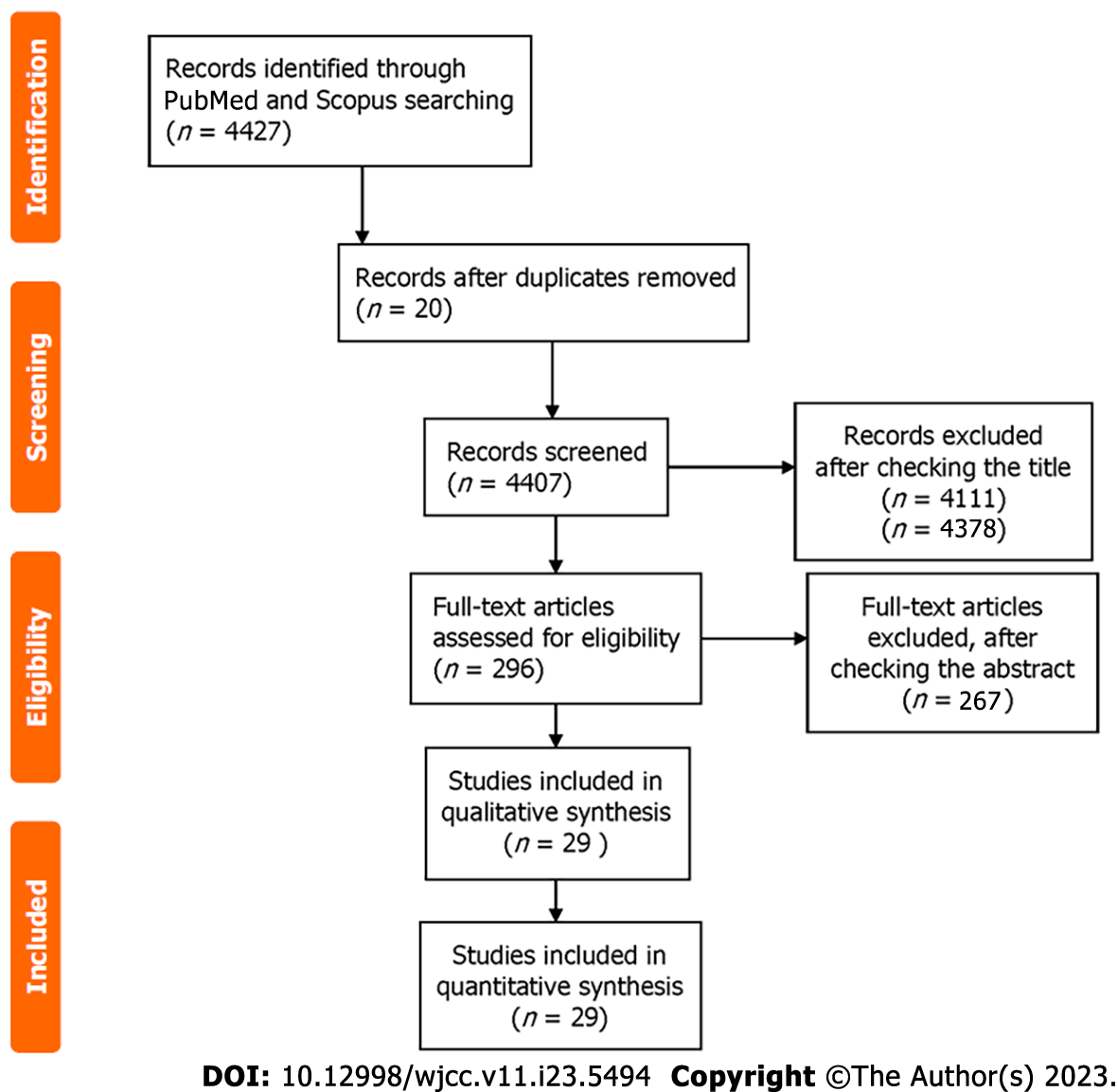Copyright
©The Author(s) 2023.
World J Clin Cases. Aug 16, 2023; 11(23): 5494-5503
Published online Aug 16, 2023. doi: 10.12998/wjcc.v11.i23.5494
Published online Aug 16, 2023. doi: 10.12998/wjcc.v11.i23.5494
Figure 1 PRISMA flow diagram.
Figure 2 Echocardiographic scan.
A: Echocardiographic scan (4-chamber view) of the patient’s truncated left ventricle in diastole; B: Echocardiographic scan (4-chamber view) of the patient’s truncated left ventricle in systole; C: Enhanced contrast echocardiographic image (2-chamber view) showing that the right ventricle wraps around the deficient LV apex.
Figure 3 Cardiac magnetic resonance imaging.
A: deficient non apex forming left ventricle; B: Axial view showing the anomalous origin of the papillary muscles in the flattened left ventricular apex; C: Sagittal view showing the right ventricle wrapping around the hypoplastic left ventricular apex.
- Citation: Bassareo PP, Duignan S, James A, Dunne E, McMahon CJ, Walsh KP. Isolated left ventricular apical hypoplasia: Systematic review and analysis of the 37 cases reported so far. World J Clin Cases 2023; 11(23): 5494-5503
- URL: https://www.wjgnet.com/2307-8960/full/v11/i23/5494.htm
- DOI: https://dx.doi.org/10.12998/wjcc.v11.i23.5494















